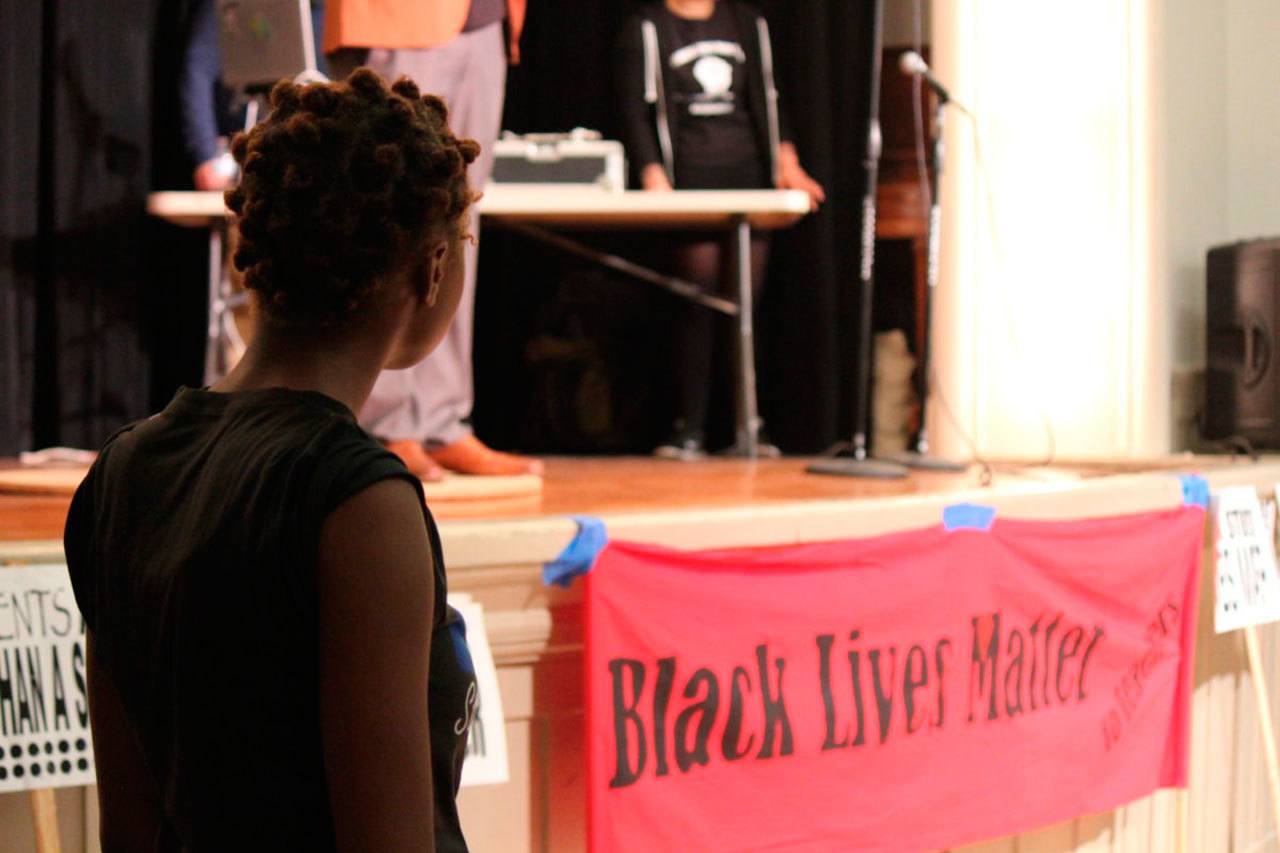An opportunity for a conversation about race and equity at Mercer Island High School (MIHS) was lost last week, according to some students at the school.
In the middle of a Black Lives Matter (BLM) protest in nearby Seattle public schools, in which teachers, students of color and their classmates wore black to stand in solidarity with the call for racial equity in education, Mercer Island had scheduled a “white out” spirit day on Oct. 21.
The MIHS administration issued a joint statement with the ASB leadership to address what they called “unfortunate timing.” It’s a tradition for students to wear white at the last home football game of the year, said Craig Degginger, communications and alumni relations coordinator for the Mercer Island School District.
“The white out was organized several weeks ago to promote school spirit by unifying our student body behind the football team,” according to the statement. “Our goal is to promote school spirit, not to polarize the MIHS community. Instead of promoting the white out, we have decided to embrace both of our school colors — maroon and white — for tonight’s events.”
Several MIHS students posted on Facebook group pages (created and monitored by the ASB leadership class) the idea that in lieu of a “white out,” which felt directly opposed to Seattle schools’ efforts, students don something black to support the cause. Many students, including freshman Auden Finch, supported the idea and were thankful for the opportunity.
The ASB leadership class is comprised of the students elected to serve as class president, vice president and the like under the supervision and oversight of MIHS teacher Chris Twombley.
According to junior Carmen Romero Wright, the ASB leadership deleted the posts for the freshman, sophomore and senior classes, although the posts were not in violation of any stated policy and remained visible for the junior class. School staff said that responsibility for the MIHS class Facebook pages is shared between the class officers.
“Mercer Island High School — instead of supporting its own students of color and those in Seattle — decided that it would be appropriate to have a ‘white-out’ day,” Wright wrote on Facebook. “Although [we] students of color are a very obvious minority at MIHS and on Mercer Island in general, it does not mean that our daily-lived experiences and histories should be ignored and [we should feel] disempowered. However, this spirit day does exactly that. The spirit of MIHS is not white. It is brown, black, and every other color under the sun.”
Wright said she knew that the spirit day was not intended to oppose BLM, but that the censorship by the ASB was “inappropriate.”
“The school could have easily changed the spirit day to something more meaningful, but they chose not to,” she said. “If they won’t accept the blame for organizing this spirit day during BLM week, they can at least take the blame for being so rude to those of us who are trying to stand with BLM.”
Other nearby districts are having conversations about these topics, with Seattle’s peaceful protest supporting the national social justice movement. More than 2,000 Seattle educators decorated themselves in black BLM T-shirts, buttons and signs on Oct. 19, and students also lent support, acknowledging that while some gaps in education are narrowing between black and white students, others remain.
According to U.S. News and World Report, in 2013, black students were 4 percent less likely to graduate high school than white students, while they were 8 percent less likely to earn a university degree and 50 percent less likely to earn an advanced degree.
MIHS “values diversity, equity and inclusion,” according to its website.
“It is committed to building and sustaining a school community where teachers, parents, learners and support staff achieve the knowledge, skills and attitudes that value and embrace inclusiveness, equity and awareness as a way to unleash creativity and innovation,” the website states.


